Last week I had the pleasure to attend an APSE Zoom meeting for local authority managers.
The Association for Public Service Excellence (APSE) is dedicated to promoting excellence in the delivery of frontline services to local communities around the UK. Through the extensive APSE network, more than 300 local authorities and organisations are able to share information and expertise on vital frontline services provision.
The meeting saw three speakers each present interesting topics.
Female friendly parks
First up was Susannah Walker representing a charity called Make Space For Girls.
Make Space For Girls campaigns for facilities and public spaces for teenage girls. They say traditional parks, play equipment and public spaces for older children and teenagers are currently designed by default for males. Provision is almost entirely in terms of skate parks, BMX tracks, football pitches and MUGAs - which are used almost entirely by boys.
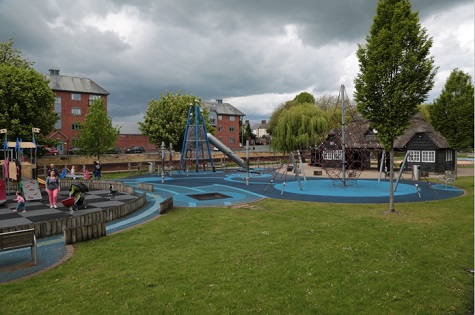
Girls are never asked what they might want and most councils have spent more time and money on facilities for dog waste than they have for teenage girls.
This absence has important implications for how active girls are, for their health in later life, and for how they see themselves as belonging in public spaces.
But providing for girls is more than an ideal, it’s a legal requirement under the Equality Act 2010. The current state of affairs does not comply with the law.
Some recent studies show that#:
- A Swedish study in 2015 showed that from the age of 8, the imbalance between boys and girls in parks was 80/20,
- Boys dominate the space in existing play areas, often by deliberately excluding girls
- Girls don’t use spaces when boys are there; only going to some spaces when they know they will be empty.
- Living near a park makes it more likely that a teenage girl will exercise - but living near a skate park actually lowered the amount of exercise teenage girls take.
- The same Swedish study in 2015 showed that teenage girls felt ten times more unsafe in public spaces.
- A recent Girlguiding survey showed that over 40% of girls aged between 11 and 21 feel unsafe when they go outside, and a third are worried to do things outside on their own.
- A study has shown that study found that it isnt access to parks per se which encouraged physical activity in adolescents, but access to a safe park.
Further data presented that was even more concerning was the fact that only 10% of girls between 13 and 16 are getting the recommended 60 mins activity per day:
- 44% of girls 13-15 are overweight;
- By the age of 14, one in four girls report experiencing high levels of depressive symptoms compared to one in ten boys.
And things aren’t getting any better. In 2011 38 % of teenage girls reported that generally they were very happy; this dropped to 18% by 2016.
As a ex parks manager I can relate to these issues, especially regarding the provision of play equipment. Generally most parks do provide a wide range of play equipment which in the main offers a lot of stimulation and challenges for most age ranges. However, once girls get to 8 and above their expectations become more challenging in that they need to feel safe and have appropriate play space to cater for their needs. Feeling safe is without doubt the primary thoughts of girls. What we need to ask ourselves is how safe are our parks?
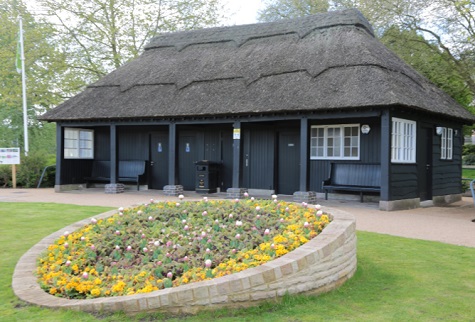
Do our parks provide the appropriate facilities these young women need to feel safe and catered for? I personally think we are getting better at making parks safer, however, when it comes to specific needs for teenage girls, we have still a lot to do.
A lot of local authorities are only now, with the help of lottery funding being able to refurbish their parks to meet the needs of a changing society. Most parks have suffered from over thirty years of austerity measures that saw a lot of old buildings, toilets and cafés closed to save money.
However, with the combination of lottery funding, and the fact we have a national benchmarking Green Flag Awards in place, we are starting to see the transformation of many of our historic parks and public open spaces. As ever we can always learn from benchmarking ourselves with other authorities.
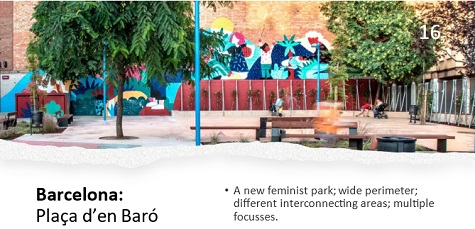
Photo: New Feminist Park Barcelona courtesy of Make Space For Girls
We were told that three European cities have tried to make a difference: Vienna, Malmo, Barcelona; using different approaches providing, better lighting, wider entrances to play areas, smaller, subdivided sports areas, or adding a second more open court. Also seating areas which are arranged in groups rather than lines, circular paths around the perimeter of the park and more swings.
The fact is we should continue to consult with teenagers and come up with some new facilities that will encourage young people to enjoy and use their local public open spaces.
History lesson
Our second presentation was by Wayne Priestly of APSE who spoke about the history and management of parks and public open spaces.
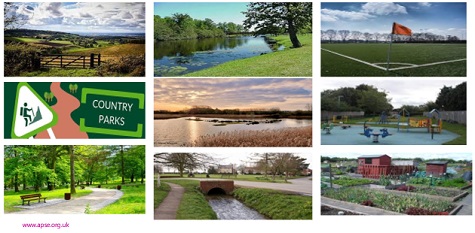
Photo courtesy of APSE
Wayne spoke about how parks came into being and the current challenges facing local authority officers culminating in the fact that over the last 25 years The National Lottery has invested more than £950m in public parks and cemeteries of national, regional or local heritage value for the enjoyment and recreation of local people.
Much of the money invested was in the form of capital investment leaving the responsibility of revenue maintenance with local authorities at a time when budgets were being reduced because of austerity measures.
It is estimated over the last decade local councils have lost £10 billion in funding for parks and greenspaces.
Urban greenspaces are now more widely recognised as providing a multitude of benefits to humans, fauna and flora and the wider environmental ecosystems.
The importance of greenspace has also been recognised within the UK Government’s ‘25-year plan to improve the environment’ which acknowledge the essential role that the natural environment and greenspaces play in people’s physical and mental health, and the need to improve population health and wellbeing by forging a closer connection between people and the natural environment.
However, these greenspaces are now under increasing pressure from a number of different threats including the growing demands for new land for housing, reducing council maintenance budgets and from the increasing impacts of climate change.
All of which has meant that we are now seeing a new approach to the management of parks that is driving more naturalisation of parks and open spaces - for example measures such as biodiversity, pollinators, reduced maintenance, reduced use of herbicide/pesticides and natural planting.
Other measures include:
- Climate change horticulture – reduced watering, increased tree planting, new plant types, street trees, mini forests, sustainable urban drainage systems. increased cooling effects/carbon sequestration.
- Supporting pollinators - wildflower meadows/ verges, Rewilding, natural regeneration where appropriate.
These new initiatives are being driven by the need to meet climate change and reduce carbon emissions within the next few years.
For myself, it is an exciting time for local authority managers, having to acquire many new skills to provide a park and public open space that meets the demands of today’s customers.
Ash die back
Our final presentation was by Mathew Seabrook, tree officer for Telford & Wrekin Council.
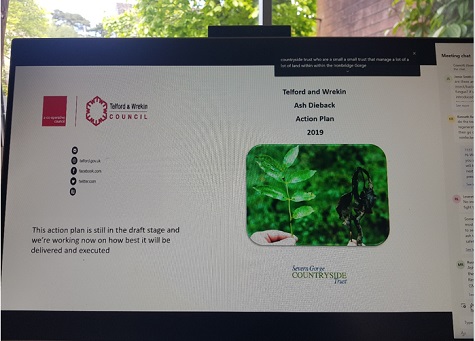
Mathew spoke about the council’s challenges in dealing with an outbreak of Ash die back and the consequences and costs of dealing with the problem - especially in having to ensure these trees are inspected on a regular basis along with the cost of the work involved in managing these plantations in forest city of over 15 million trees.
All in all the event offered a wealth of information for the fifty-plus parks managers in attendance to digest and take back to their own local authorities.
Congratulations
Finally, I would like to congratulate Chelsea on winning the Champions League trophy. It was a staggering achievement in what must have been one of the toughest footballing seasons for many years in terms of coping with Covid regulations and playing every few days to facilitate a TV audience to ensure they received their allotted revenue.

With the season officially completed, it is now a very busy time for the sports turf contractors who are tasked with renovating these senior league football clubs. The aim will be to produce a new playing surface in a matter of weeks - both in the stadium and at training grounds.
The use of new technologies and machinery has speeded up the process and in the main a single pitch can be renovated in a couple of days. Let’s hope the weather remains favourable during these renovations and we get some consistent warm weather to hasten germination.
In less than 12 weeks it all starts again!